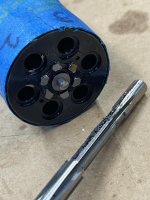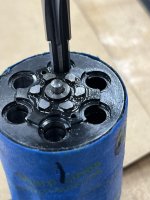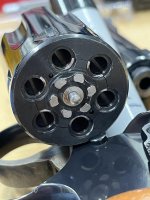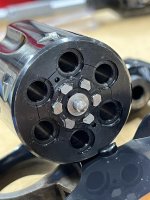I have a 17-3, 17-4 and an 18-4 that all have one or more chambers in which I can barely insert a cartridge home without what I consider too much force. I'm sure I'd have to hammer the extractor harder than what's good for it after firing, never mind the inconvenience. I've caught 22 fever this spring, and I'm just aching to go shoot these things, one of which I've owned since new and never fired, and the other two are recent buys, so you know the feeling.
Situation:
I have a Manson finisher cylinder reamer on order with an estimated delivery of 1 Jul.
I can buy a Clymer reamer from Brownell's right now.
Having read some complaints about Clymer quality here and there, and seen the raves about Manson's reamers, should I chance the Clymer and cancel the Manson if it works (and what is satisfactory "works?")
Or should I sweat out another 5 weeks and be assured of happiness?
What say you all?
Situation:
I have a Manson finisher cylinder reamer on order with an estimated delivery of 1 Jul.
I can buy a Clymer reamer from Brownell's right now.
Having read some complaints about Clymer quality here and there, and seen the raves about Manson's reamers, should I chance the Clymer and cancel the Manson if it works (and what is satisfactory "works?")
Or should I sweat out another 5 weeks and be assured of happiness?
What say you all?
Last edited:




